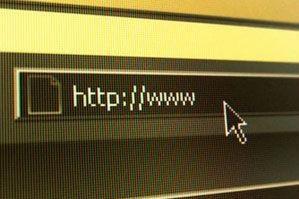March 31, 2013
MUMBAI: A humble landline and some handy information are all 59-year-old Kusum Vira uses to mobilize hundreds of cornea donations from her Lower Parel residence. Collecting over 500 eyeballs a year for the city sounds like a herculean task, and Kusum credits her community for helping her achieve this feat.

March 31, 2013
MUMBAI: A humble landline and some handy information are all 59-year-old Kusum Vira uses to mobilize hundreds of cornea donations from her Lower Parel residence. Collecting over 500 eyeballs a year for the city sounds like a herculean task, and Kusum credits her community for helping her achieve this feat.

Kusum Vira calls people from her community from her home urging them to donate
Those benefitting from cornea transplants or getting a life-saving skin graft seldom know the faces behind their new lease of life. Kusum is one of many people in the city's Gujarati and Jain communities who generously contribute to increasing the pool of eye and skin donations. Last year, over 85% of some 2,500-odd eye donations came from these two communities; for skin donations, their contribution stood at 95%. They also topped the list for body donations made to educational institutions for research.
Though Kusum simply puts it as a "religion-backed ideology that perceives donation as an ultimate form of charity", many say the model is charting its own success story. Kusum's son Vikas, secretary of NGO Tarun Mitra Mandal, which collects the highest number of eyeballs in the city, says, "Donating eyes has become more like a custom now, with more families willingly doing it. This led to us also pushing for skin donations and, surprisingly, there have been hardly any refusals."
Among Gujaratis, said Vikas, those from Kutch are the leading donors. The way to reach out to them is quite simple, he explains. The daily community bulletin Kutchi Khabar Patrika, which reaches out to over 40,000 families, appreciates the donor families, besides informing and encouraging others to do the same.
Through this bulletin Parel village resident Ojas Gala learnt about the concept of eye donation and decided to donate his mother Kumudben's eyes when she passed away at 69 recently. "It was decided beforehand. So when my mother passed away, I called one of the collection agencies without wasting time. They were at my doorstep within 15 minutes even though I had made the call at 1am," he said. Kusum said most of the doctors and social workers also belong to the community and work purely out of charity.
The idea of skin donation is still nascent in most other parts of the country. In Mumbai, the NGO Sunday Friends single-handedly facilitates the endeavour and received 177 donations last year — a 300% jump in collections over the last six years. One of the NGO's members told TOI, "Awareness in the community can bring unexpected changes in the mindset. People no longer think they will be born blind in their next birth or their entire skin will be peeled off if they donate eyes or skin or both." The member said they receive most calls for donations from areas like Santa Cruz, Vile Parle, Ghatkopar, Mulund and Bhandup, areas mostly populated by Gujaratis.
The trend is similar for eye donations, where Ghatkopar remains the biggest donor pocket in the city. Dr Prakash Katakia, of Arpan Eye Bank, which caters exclusively to Ghatkopar, told TOI that they get about 500 eyeballs from an area that registers around 3,500 deaths a year. "This is a huge percentage, given that we manage to merely collect another 3,000 eyeballs from one lakh deaths," he said.
According to Katakia more communities need to play a part now. "There is a huge waiting list and people have to wait for almost six months to a year for corneal transplants," he said. Kusum added, "The need of the hour is to get more donations from the young. Every family can do its bit here. After all charity should begin at home."
Courtesy: TNN







































































































